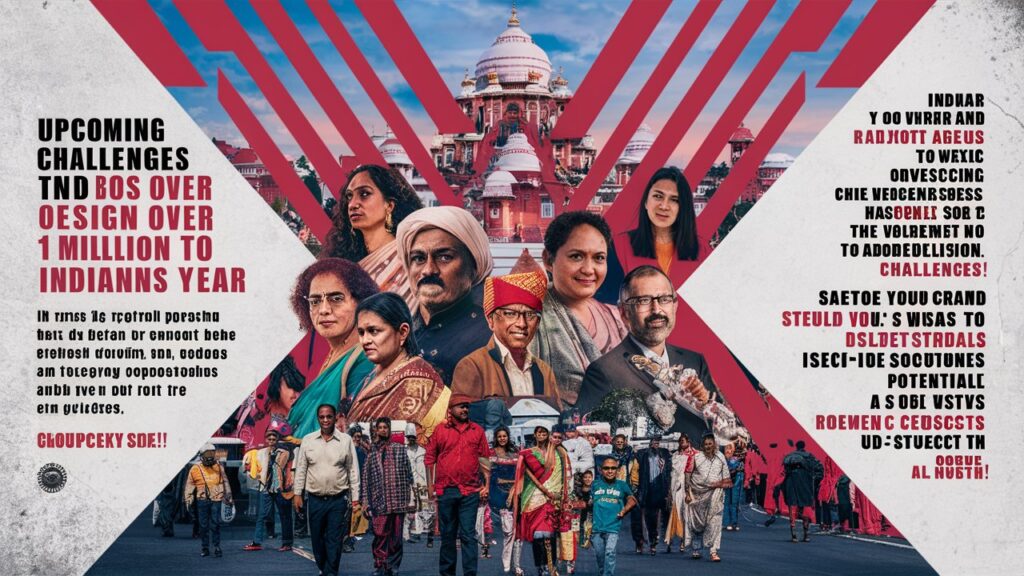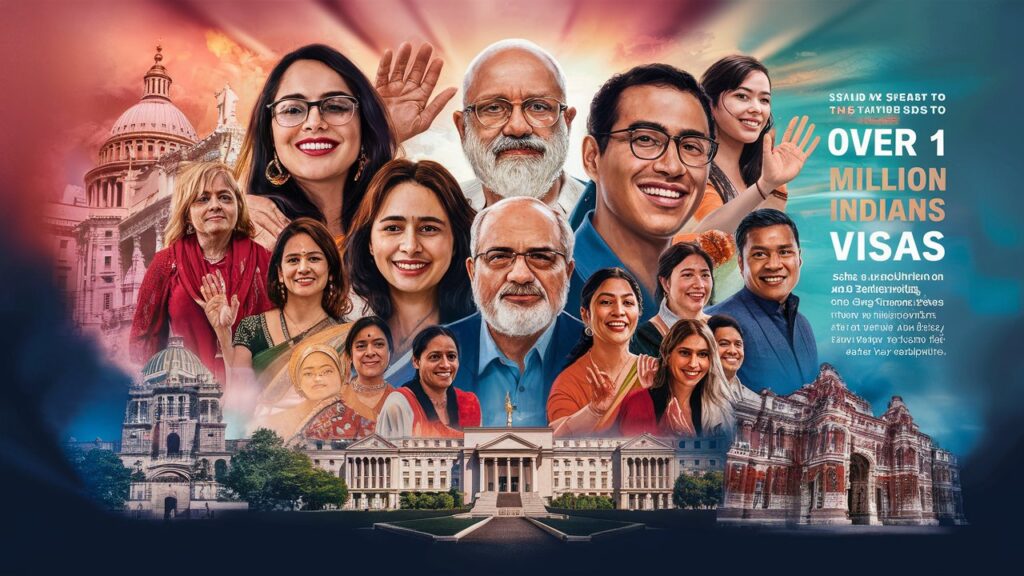In recent years, there has been a notable increase in the number of visas granted by the United States to Indian nationals. This trend reflects a confluence of factors ranging from economic opportunities and educational pursuits to family reunification and broader diplomatic relations between the two countries. Here’s a comprehensive overview of the situation:
Economic Opportunities and Employment Visas
- H-1B Visas: Indian professionals in fields such as technology, engineering, healthcare, and finance continue to be prominent recipients of H-1B visas. These visas are designed for skilled workers who are sponsored by U.S. employers to fill specific roles that require specialized knowledge.
- L-1 Visas: Executives, managers, and employees with specialized knowledge employed by multinational companies with offices in both the U.S. and India often utilize L-1 visas. This category facilitates intra-company transfers and supports the operational needs of global businesses.
Educational Pursuits and Student Visas
- F-1 Visas: Indian students represent a significant portion of international students in the United States. F-1 visas allow them to pursue academic programs at accredited U.S. institutions, ranging from undergraduate degrees to doctoral studies across various disciplines.
- OPT and STEM OPT Extensions: Optional Practical Training (OPT) and STEM OPT extensions provide opportunities for Indian graduates to gain practical work experience in their field of study in the U.S. after completing their academic programs. These initiatives enhance career prospects and contribute to the retention of talent in key industries.
Family-Based Immigration and Diversity Visas
- Family-Based Visas: Many Indian-Americans sponsor family members, including spouses, parents, children, and siblings, for immigrant visas to reunite with their families in the United States. This category supports family reunification and strengthens cultural ties between India and the U.S.
- Diversity Visa Lottery: The Diversity Visa (DV) Lottery program provides an opportunity for individuals from countries with historically low rates of immigration to the U.S., including India, to apply for immigrant visas. This initiative promotes diversity within the immigrant population and encourages global mobility.
Impact of Policy Changes and Bilateral Relations
- Immigration Policies: Changes in U.S. immigration policies, including reforms to visa processing procedures, allocation of visa quotas, and executive orders, influence the volume and types of visas issued to Indian nationals. Policy adjustments are aimed at balancing national security concerns with economic and humanitarian considerations.
- Bilateral Diplomatic Efforts: Diplomatic engagements between India and the U.S. play a crucial role in shaping visa policies and fostering mutual understanding. Consular cooperation enhances the efficiency of visa application processes and promotes people-to-people exchanges between the two countries.
Challenges and Considerations
- Visa Processing Backlogs: High demand for U.S. visas from Indian applicants can lead to processing delays and backlogs, affecting travel plans and professional opportunities. Consular services continuously strive to address these challenges through improved resource allocation and technological advancements.
- Policy Uncertainties: Changes in U.S. immigration regulations and administrative practices can create uncertainties for visa applicants and stakeholders, necessitating careful planning and preparation.
Future Outlook and Strategic Considerations
- Technological Integration: Advancements in digital platforms and online visa application systems enhance accessibility and streamline visa processing for Indian applicants. Technology-driven solutions support efficient consular services and enhance applicant experience across diverse regions of India.
- Skills Development and Educational Partnerships: Collaborative initiatives in skills development, vocational training, and educational exchanges strengthen workforce readiness and promote talent mobility between India and the U.S. Investments in STEM education and research initiatives contribute to innovation-driven economies.
Focus on Student Visas
One of the primary areas of focus is student visas. The US has pledged to process all student visa applications for Indian students whose courses begin this fall. This initiative underscores the importance of educational exchanges and the significant contribution of Indian students to American universities. By prioritizing these applications, the US aims to facilitate smoother transitions for students and support their academic ambitions.
Addressing the Backlog
The backlog of visa applications has been a pressing issue, particularly for those seeking B1 (business) and B2 (tourist) visas. These categories have seen a surge in demand as business and leisure travel resumes post-pandemic. The US is actively working to reduce wait times and improve the overall efficiency of the visa issuance process, ensuring that applicants can proceed with their travel plans without undue delays.
Prioritizing H-1B and L Visas
Indian IT professionals have long been significant in the US, contributing to the tech industry and driving innovation. Recognizing this, the US prioritizes H-1B and L visas, which are crucial for skilled workers and intra-company transferees. These visas enable Indian professionals to work in the US, fostering cross-border collaboration and benefiting both economies.

Strengthening Bilateral Relations
The decision to increase visa issuance is not just about numbers; it is a testament to the deepening relationship between India and the US. This move will enhance people-to-people ties, promote cultural exchanges, and bolster economic cooperation. By facilitating more accessible visa access, both countries can benefit from their citizens’ diverse talents and skills.
Economic Implications
The issuance of over one million visas to Indians will have significant economic implications. For the US, it means a steady influx of skilled professionals, students, and tourists, all contributing to the economy in various ways. For India, it provides opportunities for its citizens to gain global exposure, enhance their skills, and bring back valuable experiences.
Cultural Exchange and Diversity
Cultural exchange is a cornerstone of the US-India relationship. By welcoming more Indian nationals, the US enriches its cultural tapestry and promotes diversity. Indian students and professionals bring unique perspectives and ideas, fostering a more inclusive and innovative environment.
Challenges and Solutions
Despite the positive outlook, challenges still need to be solved in managing the high volume of visa applications. The US government is investing in technological upgrades and additional staffing to expedite the process. These measures aim to ensure that the visa issuance system can handle the increased demand efficiently.

Long-Term Impact
The long-term impact of issuing over one million visas to Indians extends beyond immediate economic and cultural benefits. It sets the stage for stronger bilateral cooperation in various fields, including technology, education, and business. As more Indians travel to the US for education and work, they build networks leading to future collaborations and partnerships.
Result
The US’s decision to grant more than one million visas to Indian nationals in 2023 is a historic move that highlights the importance of the bilateral relationship. By addressing the backlog, prioritizing key visa categories, and facilitating smoother processes for students and professionals, the US is demonstrating its commitment to strengthening ties with India. This initiative promises to bring both nations economic, cultural, and social benefits, fostering a deeper and more dynamic partnership.
Conclusion
The increase in U.S. visas granted to Indians highlights dynamic opportunities and challenges in international migration, economic integration, and cultural exchange. As both countries navigate evolving immigration landscapes and global dynamics, fostering robust partnerships and inclusive policies remains essential for advancing shared prosperity and sustainable development.
